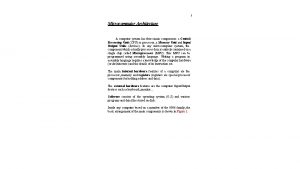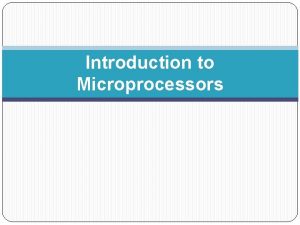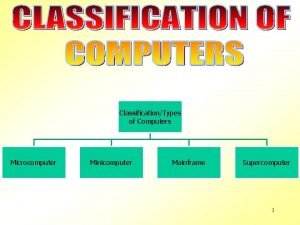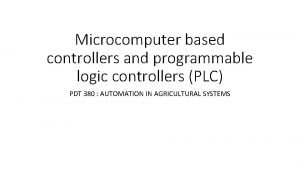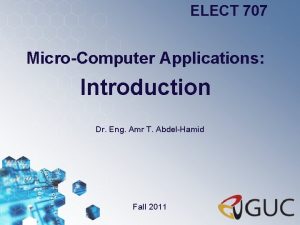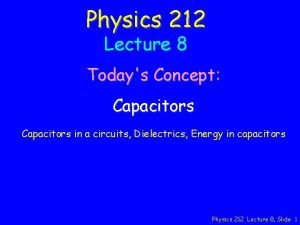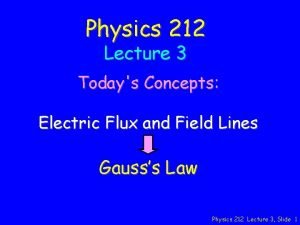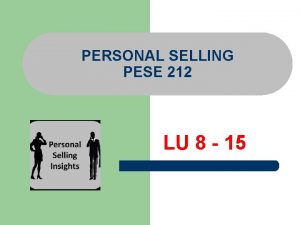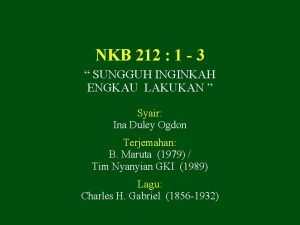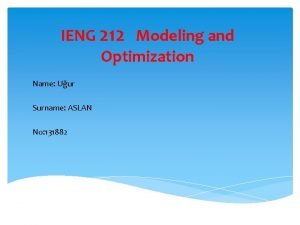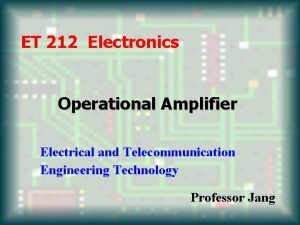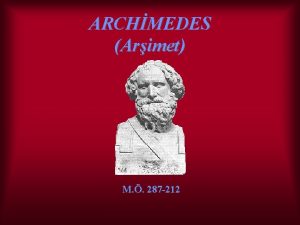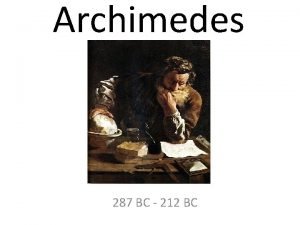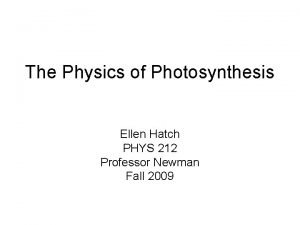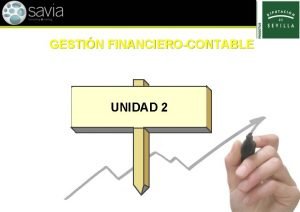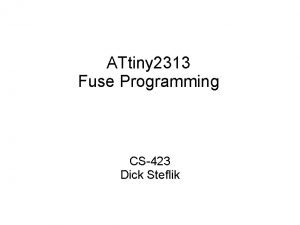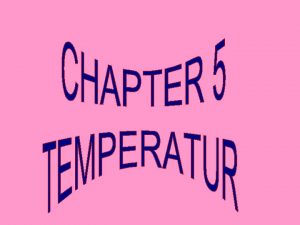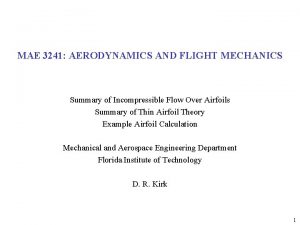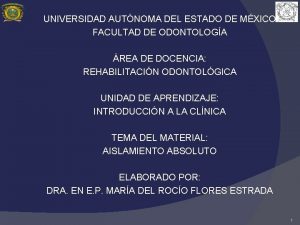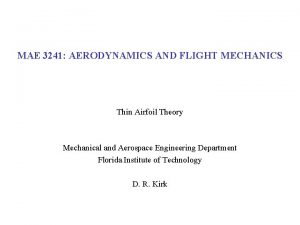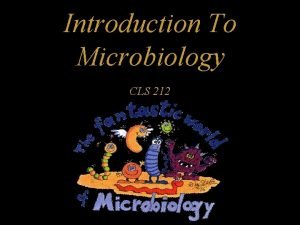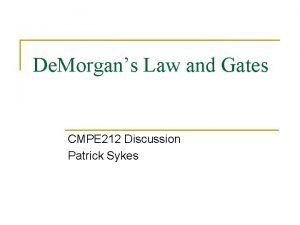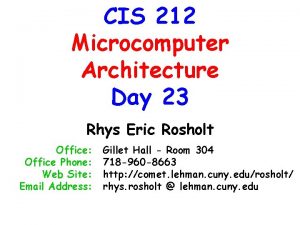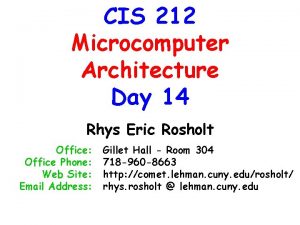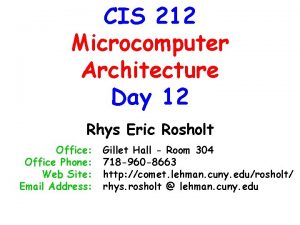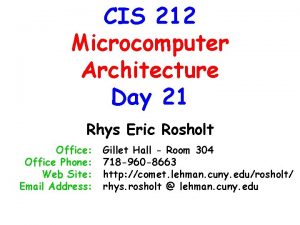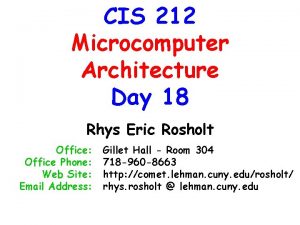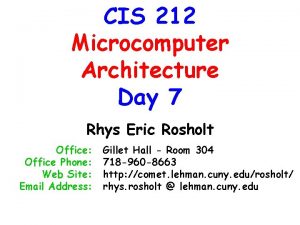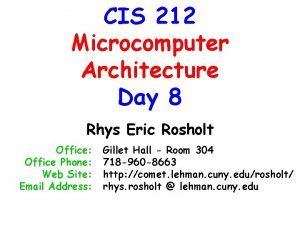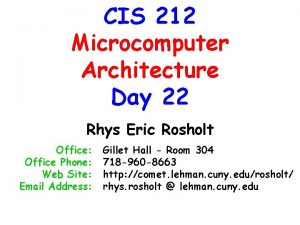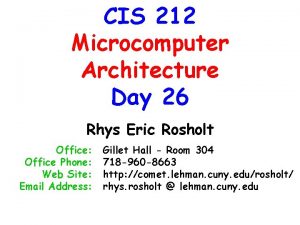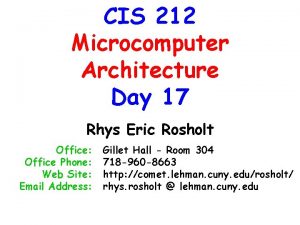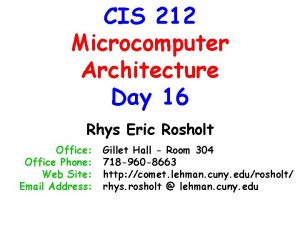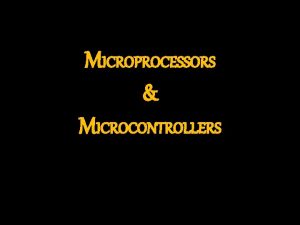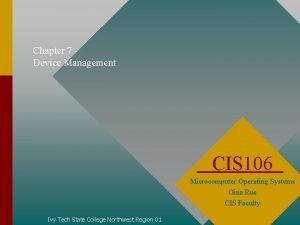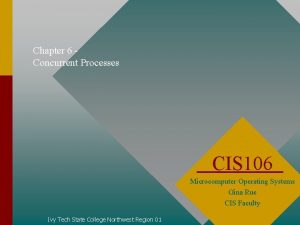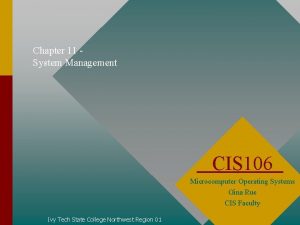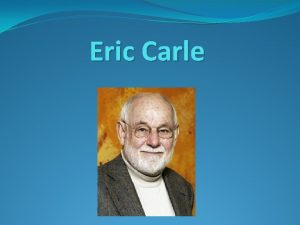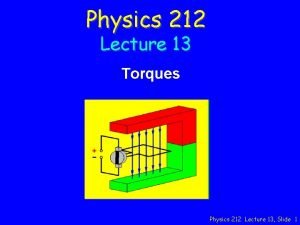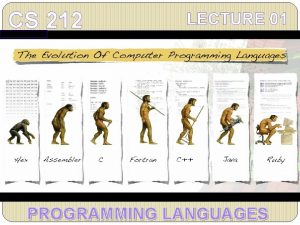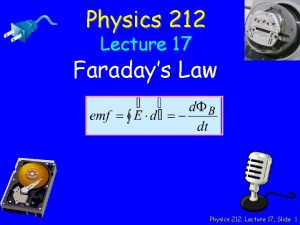CIS 212 Microcomputer Architecture Day 6 Rhys Eric



























- Slides: 27

CIS 212 Microcomputer Architecture Day 6 Rhys Eric Rosholt Office: Office Phone: Web Site: Email Address: Gillet Hall - Room 304 718 -960 -8663 http: //comet. lehman. cuny. edu/rosholt/ rhys. rosholt @ lehman. cuny. edu

Chapter 3 Data Representation

Chapter 3 Data Representation Chapter Outline Data Representation and Processing Automated Data Processing Binary Data Representation Goals of Computer Data Representation CPU Data Types – Integer – Real number – Character – Boolean – Memory address Technology Focus: Intel Memory Address Format Data Structures

CPU Data Types • Primitive data types – – – Integer Real number Character Boolean Memory address • Representation format for each type balances compactness, accuracy, ease of manipulation, and standardization

Memory Addresses • Identifying numbers of memory bytes in primary storage • Simple or complex numeric values depending on memory model used by CPU – Flat memory addresses • single integer – Segmented memory addresses • multiple integers • requires definition of specific coding format

Intel Memory Address Formats • 8088 – 20 -bit memory addresses • 4 -bit segment identifier • 16 -bit segment offset • 80286 – 24 -bit memory addresses • 8 -bit segment identifier • 16 -bit segment offset • 80386 – 32 -bit memory addresses • 16 -bit segment identifier • 16 -bit segment offset • 80486 • Pentium

Data Structures • Related groups of primitive data elements organized for a type of common processing • Defined and manipulated within software • Many use pointers to link primitive data components

Commonly Used Data Structures arrays linked lists records tables files indices objects

One Address Finds Many Data Elements

Pointers and Addresses • Pointer – Data element that contains the address of another data element • Address – Location of a data element within a storage device

Arrays and Lists • List – A set of related data values • Array – An ordered list in which each element can be referenced by an index to its position

A simple array is used to store words

Linked Lists • Data structures that use pointers so list elements can be scattered among nonsequential storage locations – Singly linked lists – Doubly linked lists • Easier to expand or shrink than an array

A Singly Linked List

A Singly Linked List

Editing An Array

Editing A Singly Linked List

A Doubly Linked List

Records and Files • Records – Data structures composed of other data structures or primitive data elements – Used as a unit of input and output to files • Files – Sequence of records on secondary storage

A Record Data Structure

Methods of Organizing Files • Sequential – Stores records in contiguous storage locations • Indexed – An array of pointers to records – Efficient record insertion, deletion, and retrieval

An Indexed File

Classes and Objects • Classes – Data structures that contain traditional data elements and programs that manipulate that data – Combine related data items and extend the record to include methods that manipulate the data items • Objects – One instance, or variable, of the class

A Class of Objects

Summary • How data is represented and stored within computer hardware • How simple data types are used as building blocks to create more complex data structures (e. g. , arrays, records) • Understanding data representation is key to understanding hardware and software technology

Chapter Goals • Describe numbering systems and their use in data representation • Compare and contrast various data representation methods • Describe how nonnumeric data is represented • Describe common data structures and their uses

Next Class Tuesday February 21, 2012 Rhys Eric Rosholt Office: Office Phone: Web Site: Email Address: Gillet Hall - Room 304 718 -960 -8663 http: //comet. lehman. cuny. edu/rosholt/ rhys. rosholt @ lehman. cuny. edu
 Day 1 day 2 day 3 day 4
Day 1 day 2 day 3 day 4 Microcomputer architecture
Microcomputer architecture Day 1 day 2 day 817
Day 1 day 2 day 817 Characteristics of micro computers
Characteristics of micro computers Uses of minicomputer
Uses of minicomputer Difference between plc and microprocessor
Difference between plc and microprocessor 707
707 Physics 212 gradebook
Physics 212 gradebook Physics 212 gradebook
Physics 212 gradebook Pese 212
Pese 212 Nkb 212
Nkb 212 Ienf-212
Ienf-212 Et 212
Et 212 Et 212
Et 212 Arm reach 212 cm on tiptoes
Arm reach 212 cm on tiptoes Archimedes ( arşimet) (mö 287–212 )
Archimedes ( arşimet) (mö 287–212 ) 287 bc
287 bc Phys 212 equation sheet
Phys 212 equation sheet 212 instalaciones tecnicas ejemplos
212 instalaciones tecnicas ejemplos Attiny 212
Attiny 212 Có 3 thùng dầu mỗi thùng chứa 125l tóm tắt
Có 3 thùng dầu mỗi thùng chứa 125l tóm tắt Suhu suatu zat 212 0 f, maka suhu mutlaknya adalah
Suhu suatu zat 212 0 f, maka suhu mutlaknya adalah Naca
Naca Arco de sauver
Arco de sauver Cls 212
Cls 212 Naca 4421
Naca 4421 Sfsu cls
Sfsu cls Cmpe 212
Cmpe 212

